We are proud to announce the opening of Robert Barry’s solo in our Hamburg gallery with an exhibition that includes both early pieces and new works.
Barry, a pioneer of American Conceptual and Minimal Art, has been represented by Sfeir-Semler since 1993. One of the most emblematic figures of these movements, together with friends and fellow artists Carl Andre, Douglas Huebler, Donald Judd, Sol LeWitt or Lawrence Weiner for example, Barry started developing major radical works in the early 60s, joining the core circle of those exhibiting at the time with avant-gardist dealer and curator Seth Siegelaub.
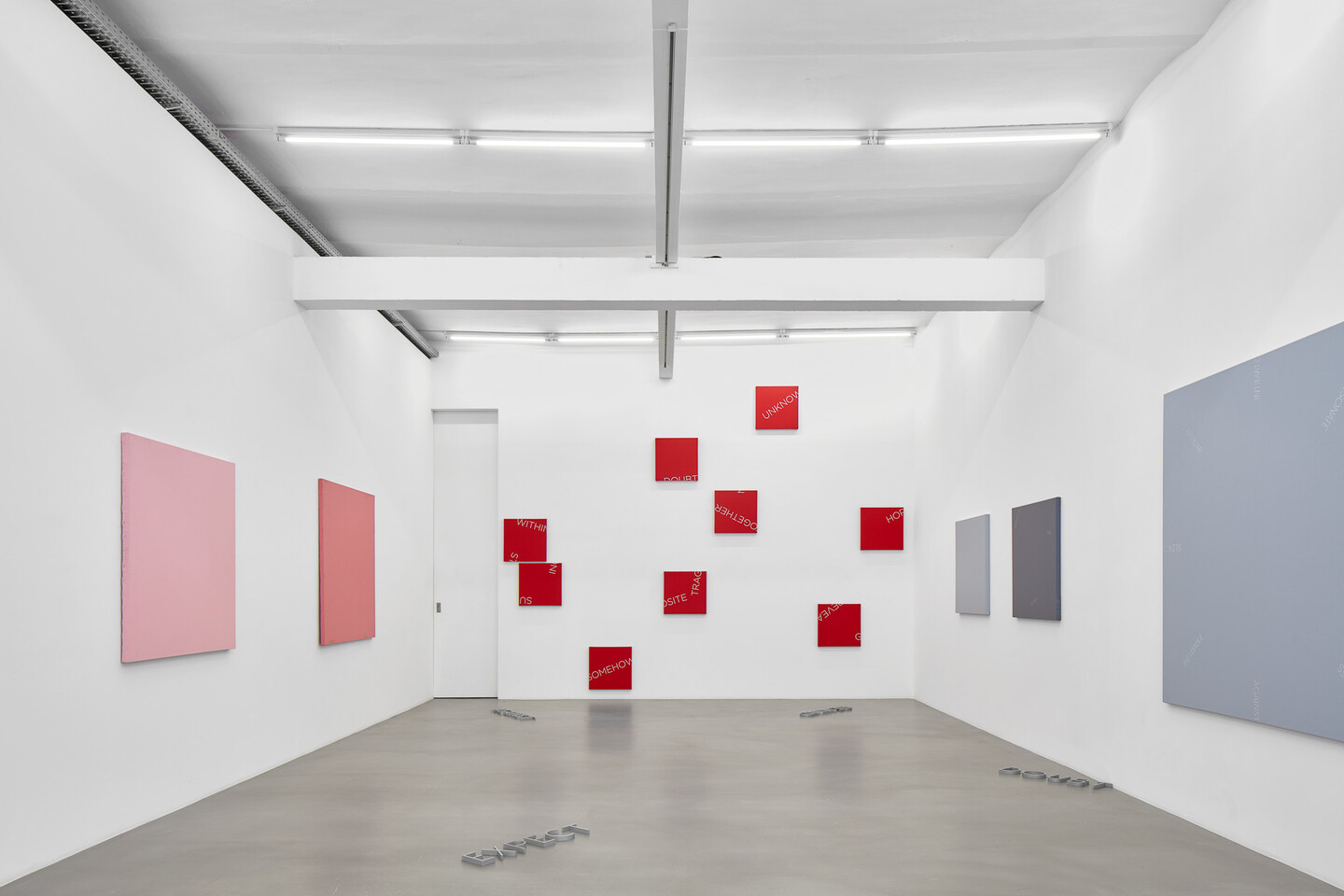
Barry's work often focuses on the immaterial and the invisible, pushing the boundaries of what defines an artwork. His approach, characteristic of the movement that prioritized concept over form, was consecrated by Harald Szeemann in his iconic group exhibition Live in Your Head: When Attitudes Become Form in 1969.
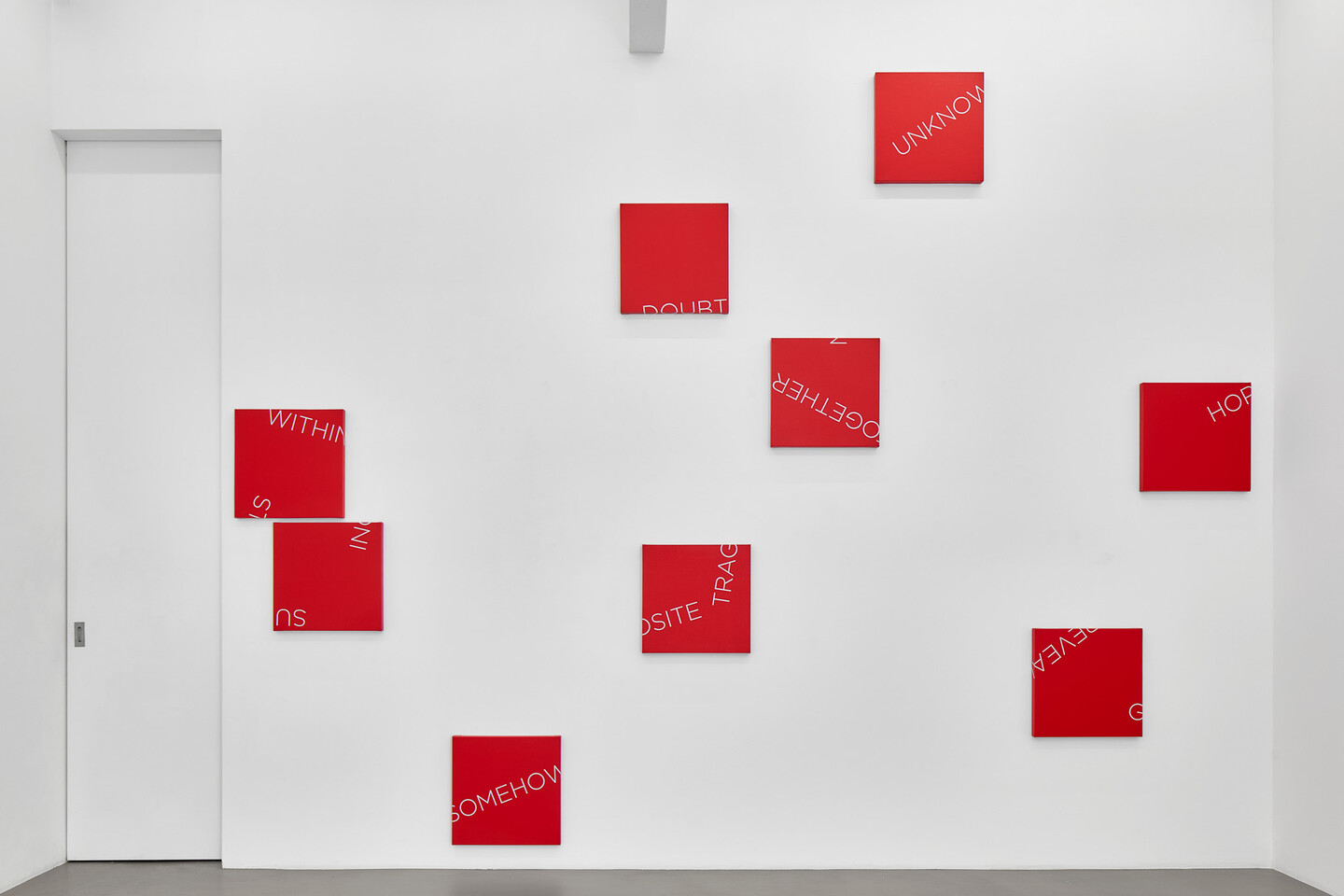
From the late 60's onwards, Barry focused more closely on the printed word, which allowed him to convey concepts without the use of a physical form. He published book projects, printed text on index cards, and worked with slide installations projecting fragments of language or short sentences onto walls. He also developed his characteristic "Word Works", playing with panes, spaces and scales, pasted on walls, and windows as foils or scattered as aluminum letters on the floor. Single words address the viewer directly, and only become a complete work once grasped by the mind. For the exhibition in Hamburg, the artist has developed a special work installed on the gallery’s ground floor window, using the signature capital letters typeface he developed in the mid-1970s.
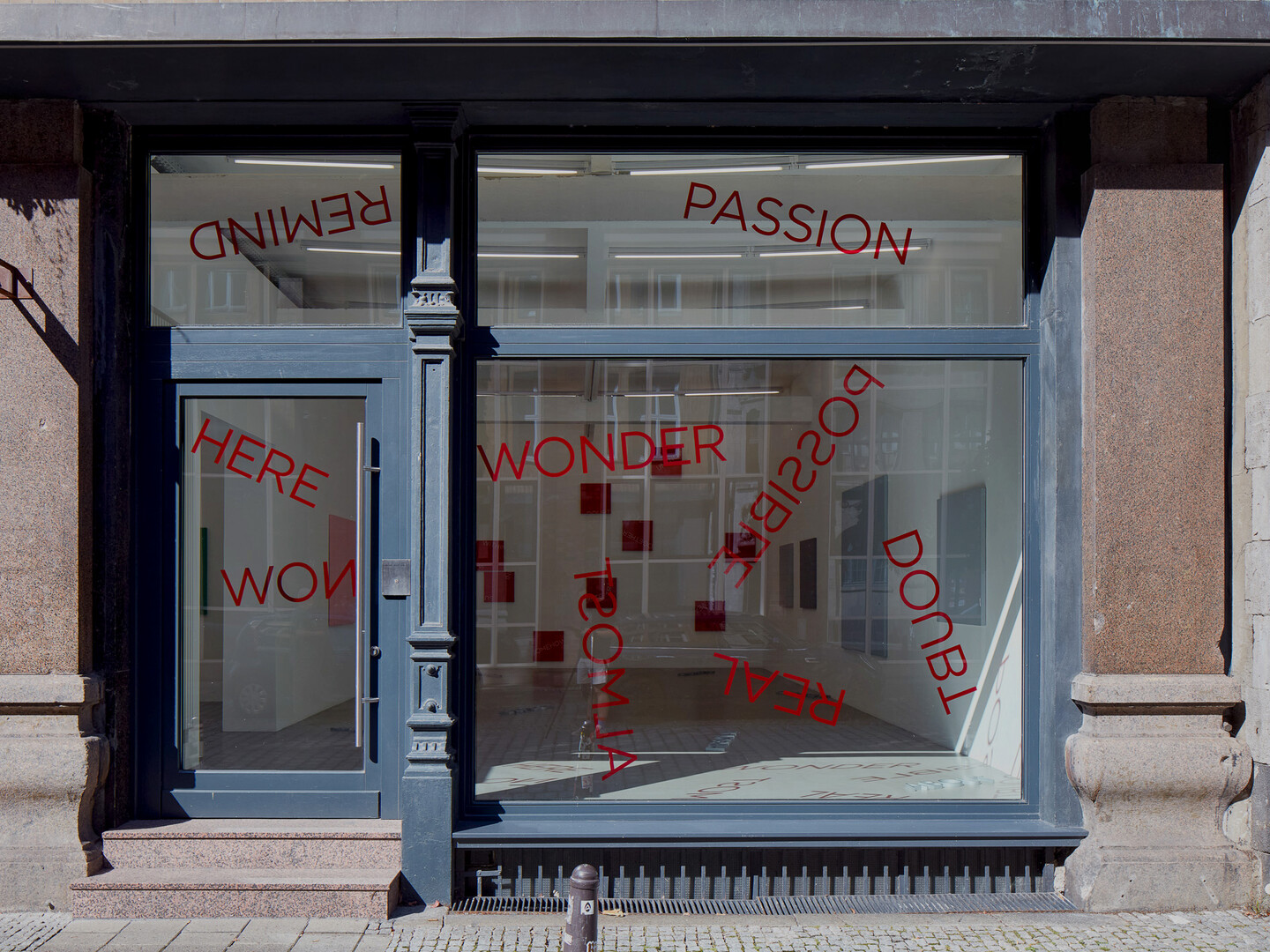
red foil words on window, dimensions variable
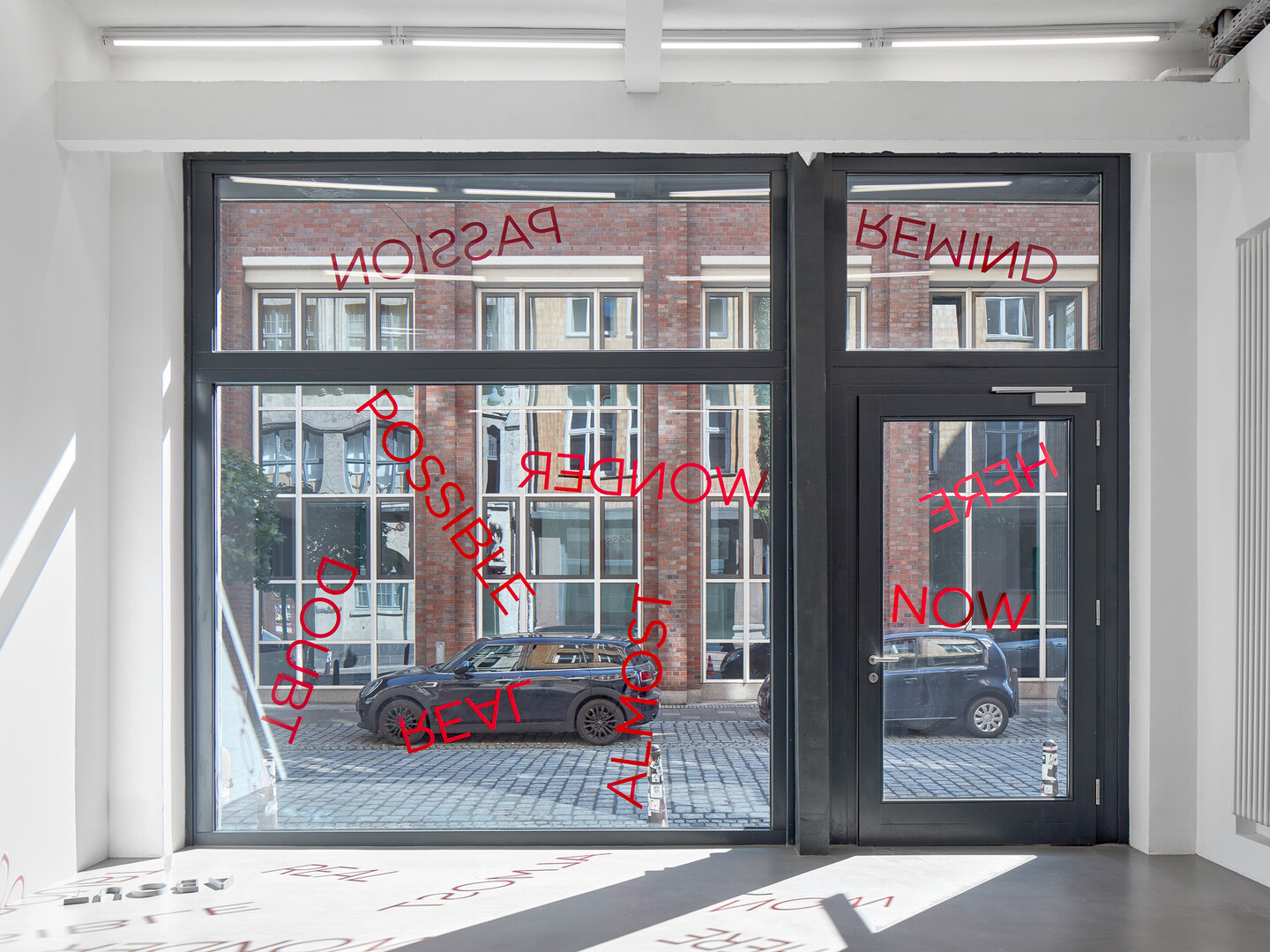
red foil words on window, dimensions variable
Barry’s concern with both space and surfaces has been central to his practice. He has often used minimalist linear grids on the flat pane of a canvas and in the three dimensional exhibition space. Using wires or transparent nylon cord he created installations that clearly define specific areas, thereby revealing empty spaces in a room. In his early monochrome paintings, such as the one presented in the exhibition, he reduces his intervention to elementary colors, simple geometric forms and blank canvas. Referring within the fabric rectangle to the space in which the painted surface is exhibited.
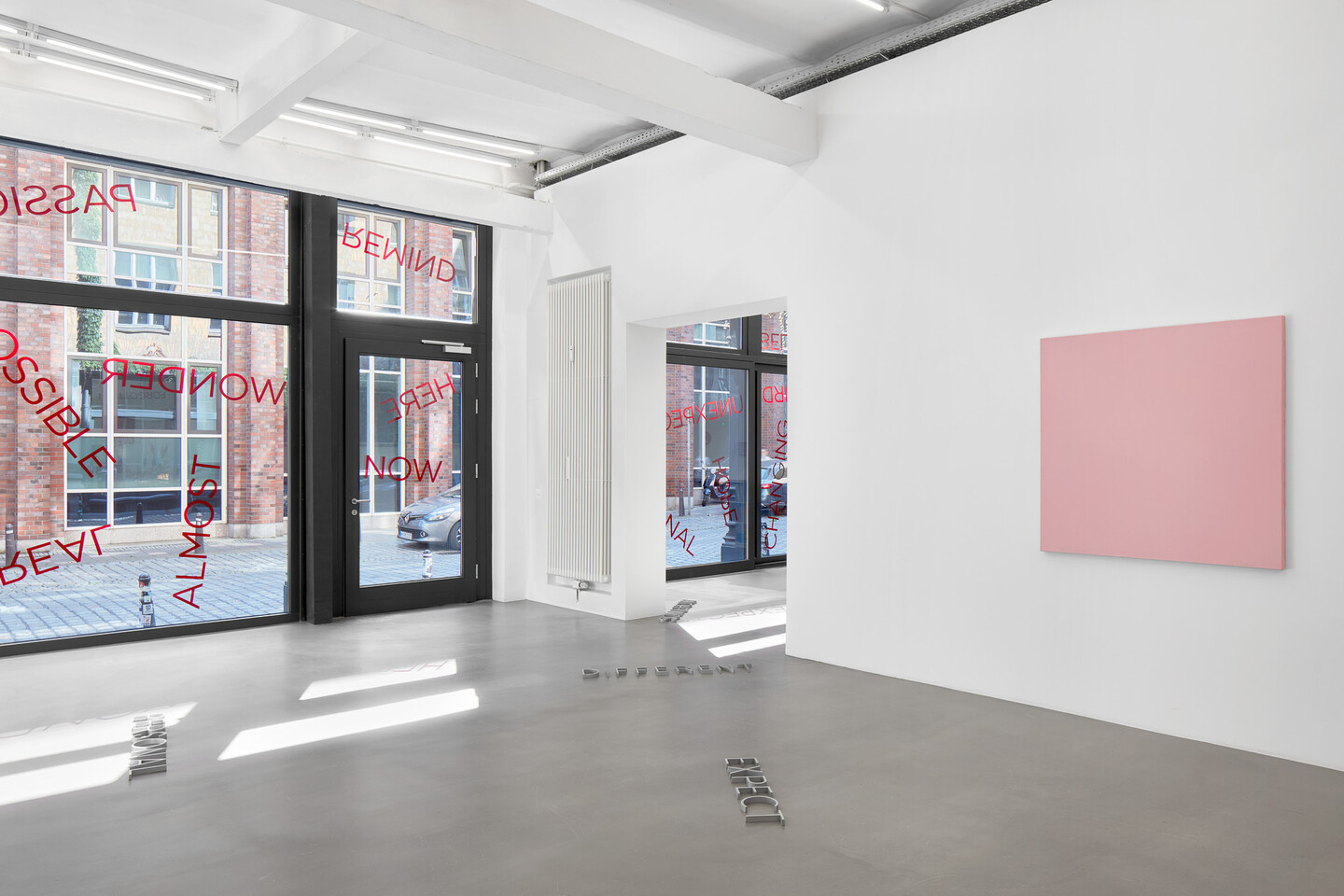
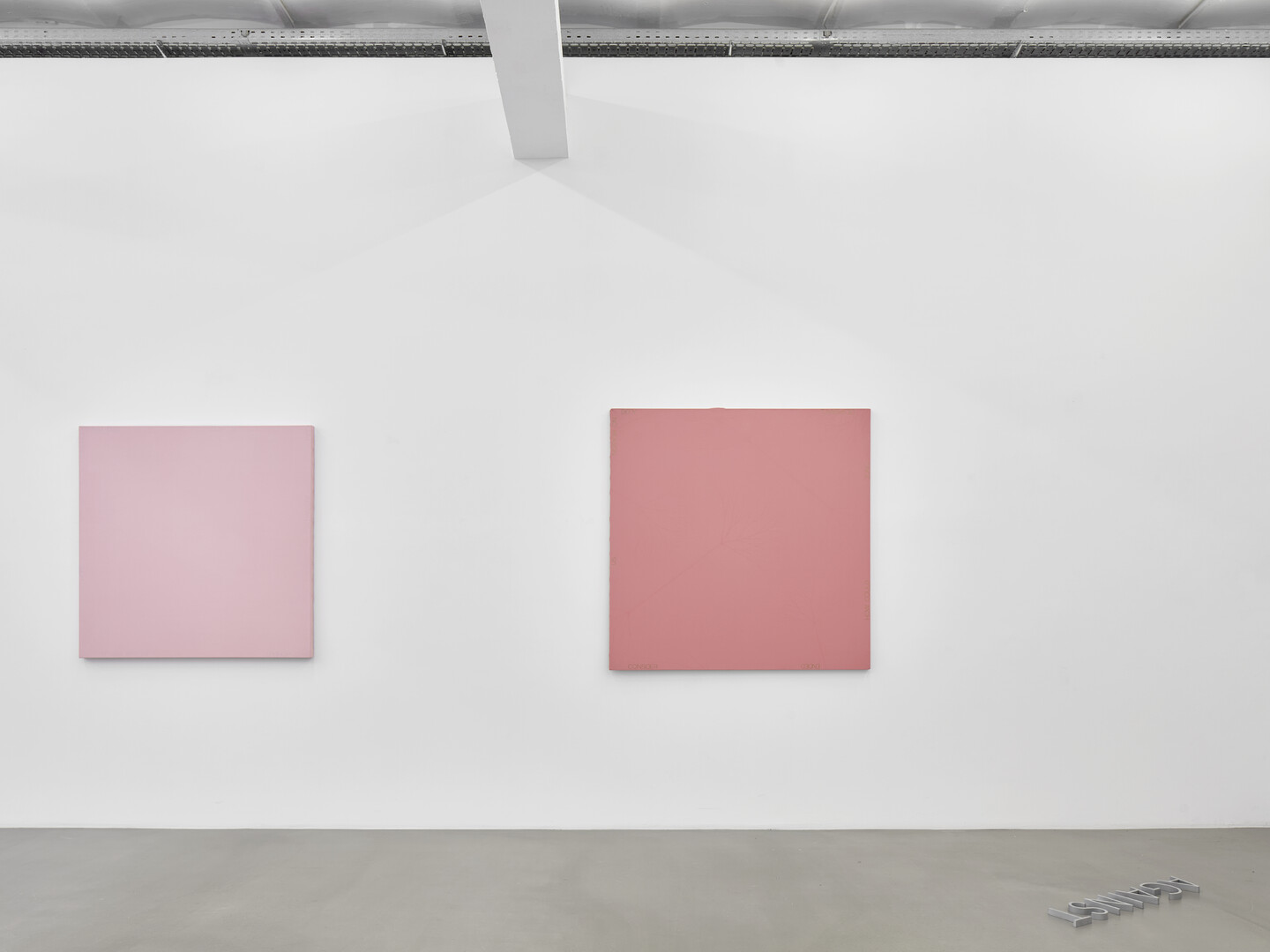
More recent works on canvas in the exhibition include his monochromic, square paintings on which words are painted in an orderly manner, which he started producing in the 1980s. The words are painted on a single-colored background, and always follow a strict logical arrangement. Either in a neat diagonal, equally distant in a circle around the center of the canvas, or in a square.
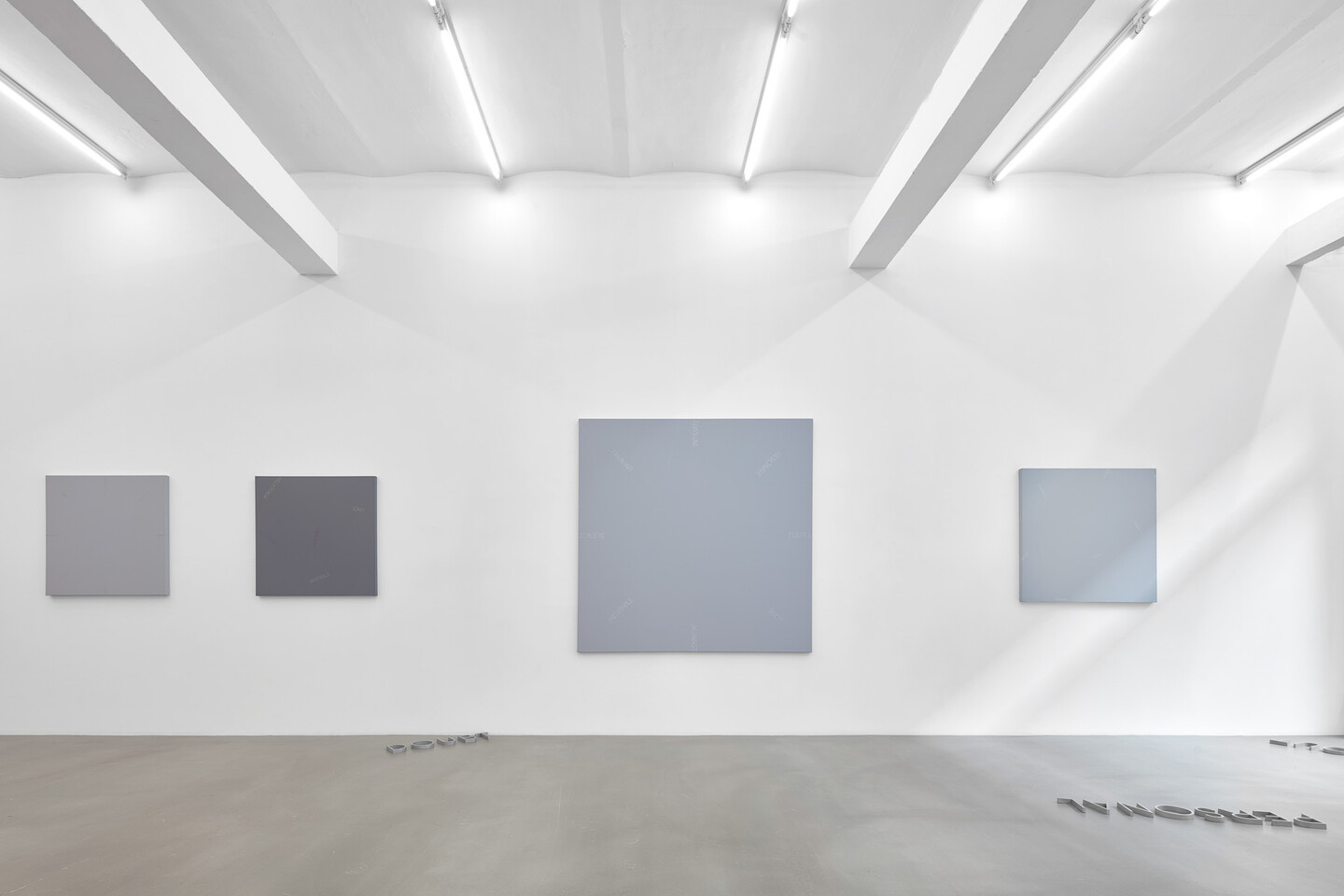
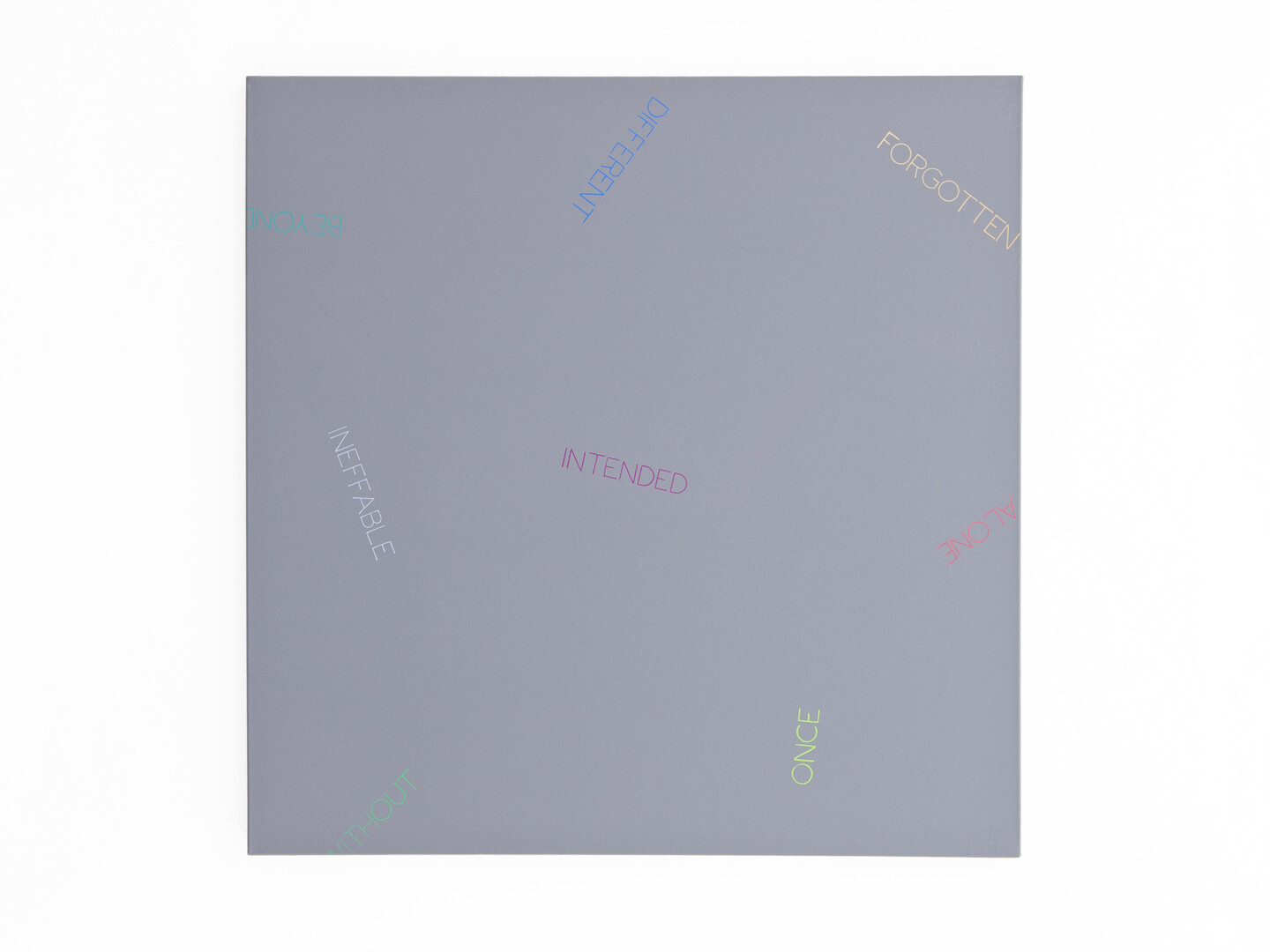
acrylic on canvas, 91.5 × 91.5 cm
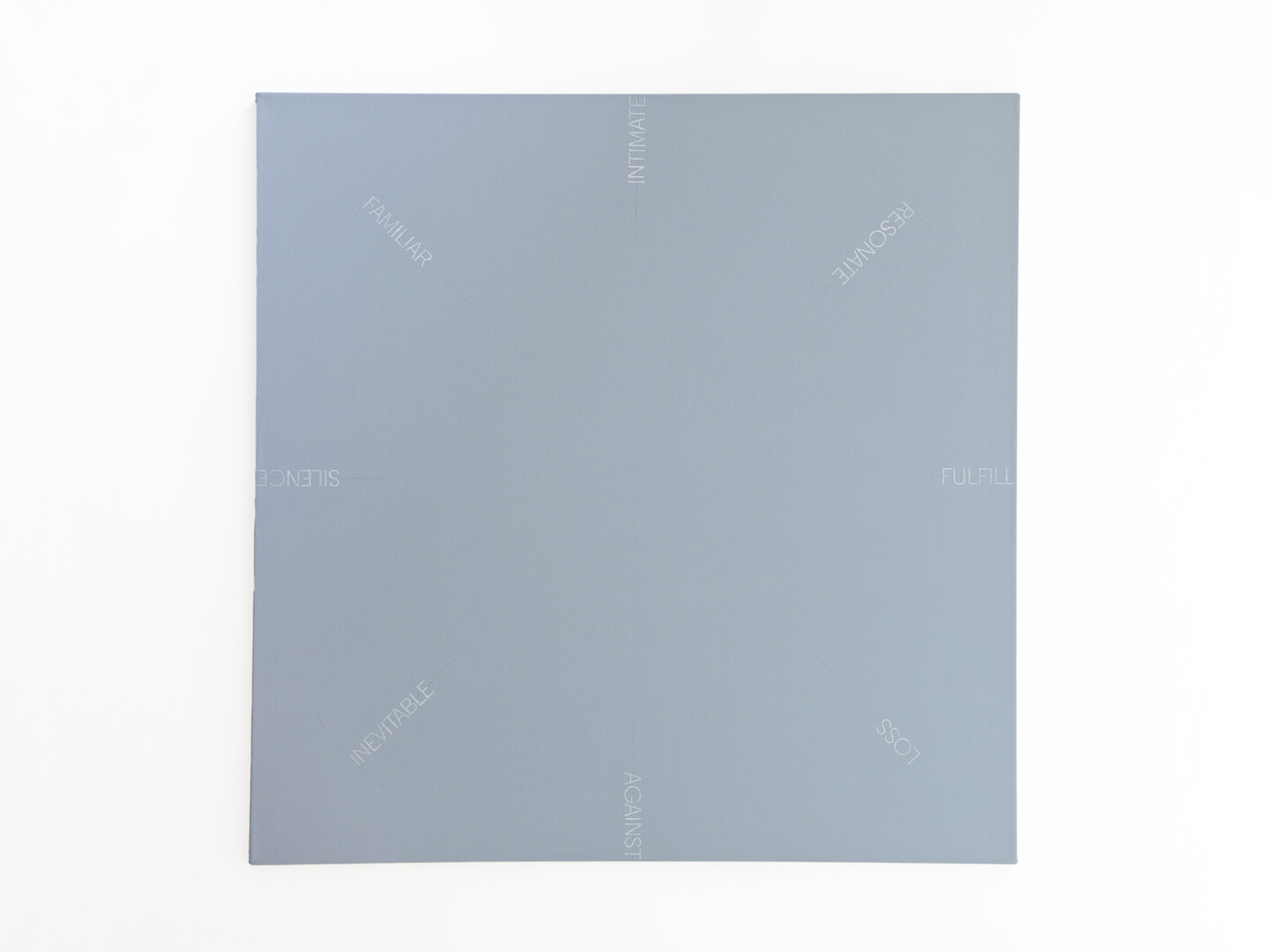
acrylic on canvas, 179 × 179 cm
The exhibition presents an overview of Robert Barry’s work, starting in the 1960's up to today, highlighting his crucial contribution to a movement that has transformed not only the course of art history, but also our understanding of contemporary art.
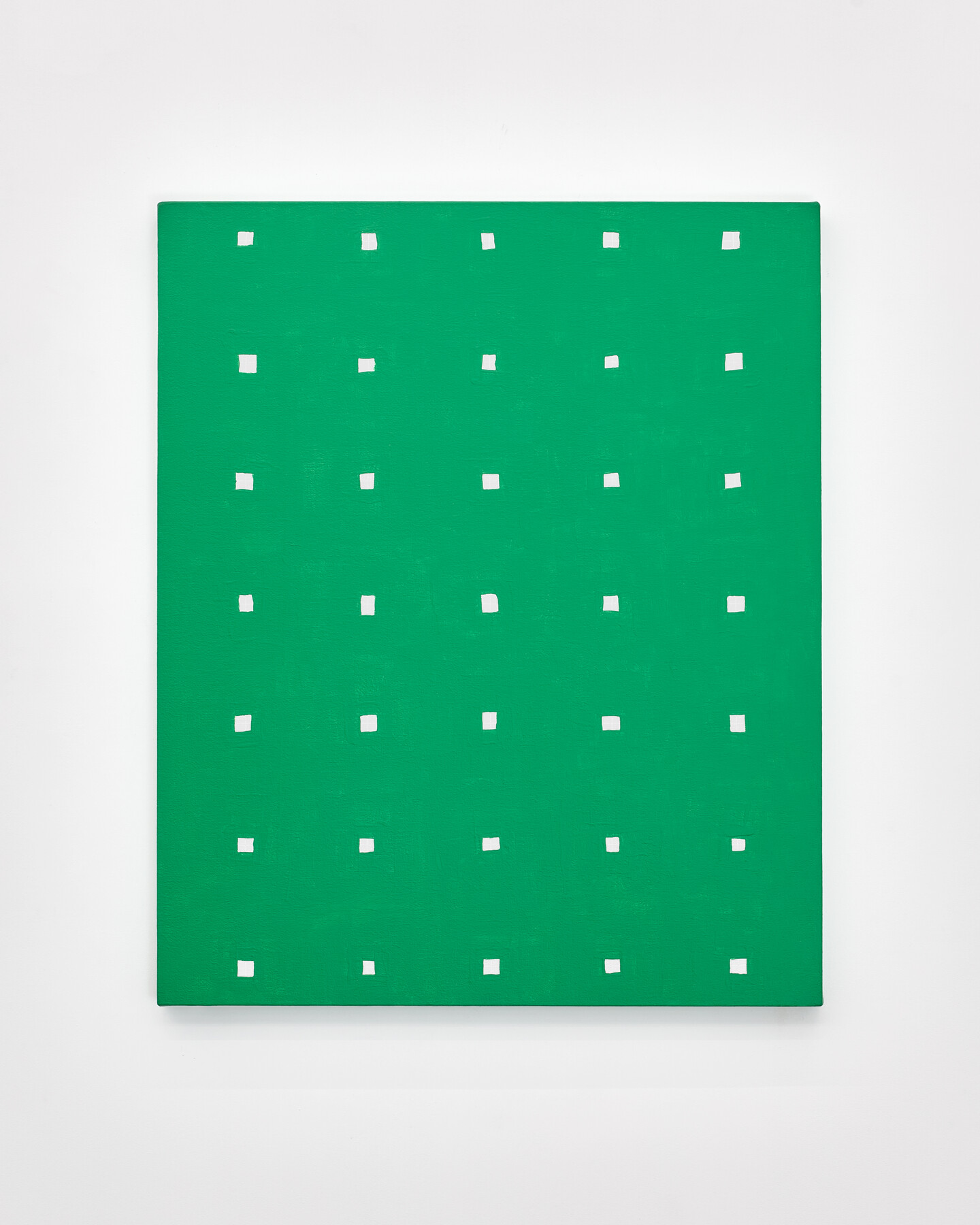
acrylic and pencil on canvas, 101.6 × 83.8 cm